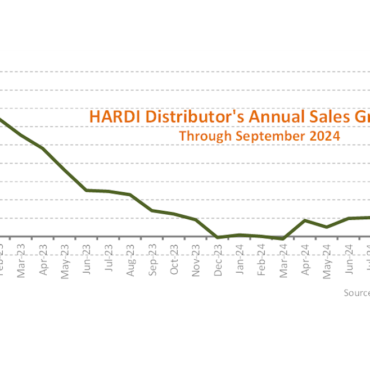A recent study from Plus Docs analyzed Bureau of Labor Statistics data to identify the states with the most dramatic changes in union membership between 2013 and 2023. The results paint a complex picture of the evolving role of unions across different regions of the country.
Overall, the average percentage of workers who are part of unions was at 9.4% across the US. Hawaii is currently the state with the largest portion of workers in a union at 24.1%, while South Carolina has the lowest figure at 2.3%.
Daniel Li, CEO and Co-Founder of Plus Docs, commented on the findings: “It’s interesting to see where states are seeing union memberships surge, especially as although there is a general increase in the South and Midwest, it is also true that neighboring states can see vastly different results. While Mississippi has nearly doubled its union membership, their neighbor, Alabama, has gone the opposite way.”
He added: “There are 18 states which have seen an overall decline in membership, with only two states keeping the same numbers. This could be from a range of factors, such as a younger workforce beginning their careers, who may be less likely to be part of a union than older employees, older generations retiring and no longer being members, or this could be due to state policies and legislation on unions. Whatever the reason, the study has highlighted an interesting disparity across the nation.”
10 States Where Unions Are Losing Ground
1. Alaska: This state saw the sharpest decline, with union membership plummeting by 36.6% – a loss of 26,000 members. In 2013, 23.1% of Alaska’s workforce belonged to a union; by 2023, that number had dropped to 14.8%.
2. Wisconsin: The Badger State experienced the second-largest drop, with 112,000 fewer union members (a 35.3% decrease). Union representation fell from 12.3% of the workforce in 2013 to just 7.4% in 2023.
3. West Virginia: The Mountain State saw union membership decrease by 31%, from 12.7% of the workforce in 2013 to 8.7% in 2023. That translates to 27,000 fewer union members.
4. South Carolina: With a 29% decline, South Carolina now has the lowest unionization rate in the country. Only 2.3% of workers (49,000 individuals) belong to a union, down from 3.7% (69,000 workers) in 2013.
5. Iowa: The Hawkeye State lost 36,000 union members, a 25.2% decrease. Union representation fell from 10.1% of the workforce in 2013 to 7.2% in 2023.
6. Alabama: Alabama saw a 23.2% decline in union membership, with 47,000 fewer workers belonging to unions. Union representation dropped from 10.5% of the workforce in 2013 to 7.5% in 2023.
7. Kentucky: The Bluegrass State experienced a 21.6% decrease in union membership, with 42,000 fewer workers belonging to unions. Despite this, the unionization rate remains relatively high at 8.8%.
8. Rhode Island: America’s smallest state saw a 19.5% decline in union membership, with 15,000 fewer workers belonging to unions. Union representation fell from 16.9% of the workforce in 2013 to 12.3% in 2023.
9. Maine: Maine experienced an 18.8% decrease in union membership, with 12,000 fewer workers belonging to unions. Union representation dropped from 11.1% of the workforce in 2013 to 9.2% in 2023.
10. Illinois: The Prairie State saw a 16.8% decline in union membership, with 143,000 fewer workers belonging to unions. Union representation fell from 15.8% of the workforce in 2013 to 12.8% in 2023.
The States Where Unions Are on the Rise
1. Mississippi: The Magnolia State saw the largest increase in union membership, with a staggering 97.4% growth rate. The number of union members jumped from 38,000 in 2013 to 75,000 in 2023, representing 7% of the workforce.
2. Arkansas: The Natural State experienced the second-largest increase, with a 63.2% growth rate. The number of union members grew by 24,000, from 38,000 in 2013 to 62,000 in 2023.
3. Vermont: The Green Mountain State saw a 38.7% increase in union membership. The number of union members grew from 31,000 in 2013 to 43,000 in 2023, representing 14.3% of the workforce.
Whether you require installation, repair, or maintenance, our technicians will assist you with top-quality service at any time of the day or night. Take comfort in knowing your indoor air quality is the best it can be with MOE heating & cooling services Ontario's solution for heating, air conditioning, and ventilation that’s cooler than the rest.
Contact us to schedule a visit. Our qualified team of technicians, are always ready to help you and guide you for heating and cooling issues. Weather you want to replace an old furnace or install a brand new air conditioner, we are here to help you. Our main office is at Kitchener but we can service most of Ontario's cities
Source link




Add Comment